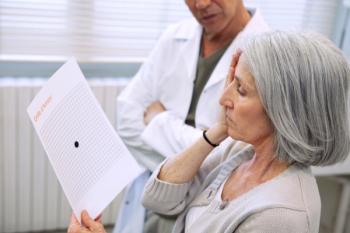
Glycemic Control to Prevent or Delay Diabetic Retinopathy
Educating patients to prevent or delay progression of diabetic retinopathy by glycemic control of their diabetes and lifestyle modifications.
Transcript
Jose Martinez, MD: Glycemic control is very important when it comes to reducing one’s risk of diabetic eye disease. Several studies have shown, whether it’s the DCC trial or the ACCORD trial, better glycemic control reduces one’s risk of diabetic eye disease: it directly reduces it. That’s something we emphasize in our clinic: the importance of good blood sugar control. We always ask patients what their A1C [glycated hemoglobin] is, and we try to get them to shoot for something below 7% ideally. Certainly, if it’s up to 10%, 11%, 12%, we try to make sure they understand the importance of getting better control. That’s going to reduce their risk of more complications 5 to 10 years down the road. We often tell patients, “The diabetic eye disease I’m treating today is really related to your glycemic control 5 to 10 years ago.” It’s important that they understand the importance to reduce their risk of problems down the road to have good blood sugar control.
I tell patients the more they control their sugar, the better chance they have of maintaining their vision. Some patients come in with the mistaken notion that, if their blood pressure or blood sugar spikes 1 day, it’s going to cause sudden edema in their eye. It doesn’t work that way. Their eye disease is due to the accumulation of years of high glucose in their bloodstream, and that’s what’s causing the microvascular changes.
I try to emphasize then the hemoglobin A1C level is the better indicator of whether they’re going to progress. That measures how well they’ve been controlling their blood sugar the 3 months prior. That’s why it’s a better measure of how well they’re going to do long term and a better predictor of whether they’re going to have advancing diabetic eye disease.
Robert Wong, MD: I discuss lifestyle modifications with every patient with diabetes in my clinic. Studies show that controlling blood pressure and blood sugar can greatly improve a patient’s chances of preventing worsening complications with diabetes. We talk about diet and exercise at every visit. To a healthcare provider, this may be a simple undertaking. For patients, a major lifestyle change is hard to do, so we take it 1 visit at a time. I don’t ask them to cut sugar completely out of their diet, because that would be impossible. I just say, “Let’s do the right thing more of the time. Make the correct choices more of the time.”
For instance: Thanksgiving. It can be very difficult to not have that piece of pie. Maybe this year they can have a half a piece of pie, and maybe next year, skip it altogether. It’s little stepping-stones that can get us to our goal.
I always talk about the hemoglobin A1C. I find it very important for every patient to know what their number is. If they don’t know their number, I ask them to follow up with their primary care physician or endocrinologist to find out what it is and report back to me. If you know your own A1C, it tells me you’re invested in your own long-term care.
Newsletter
Stay ahead of policy, cost, and value—subscribe to AJMC for expert insights at the intersection of clinical care and health economics.







































